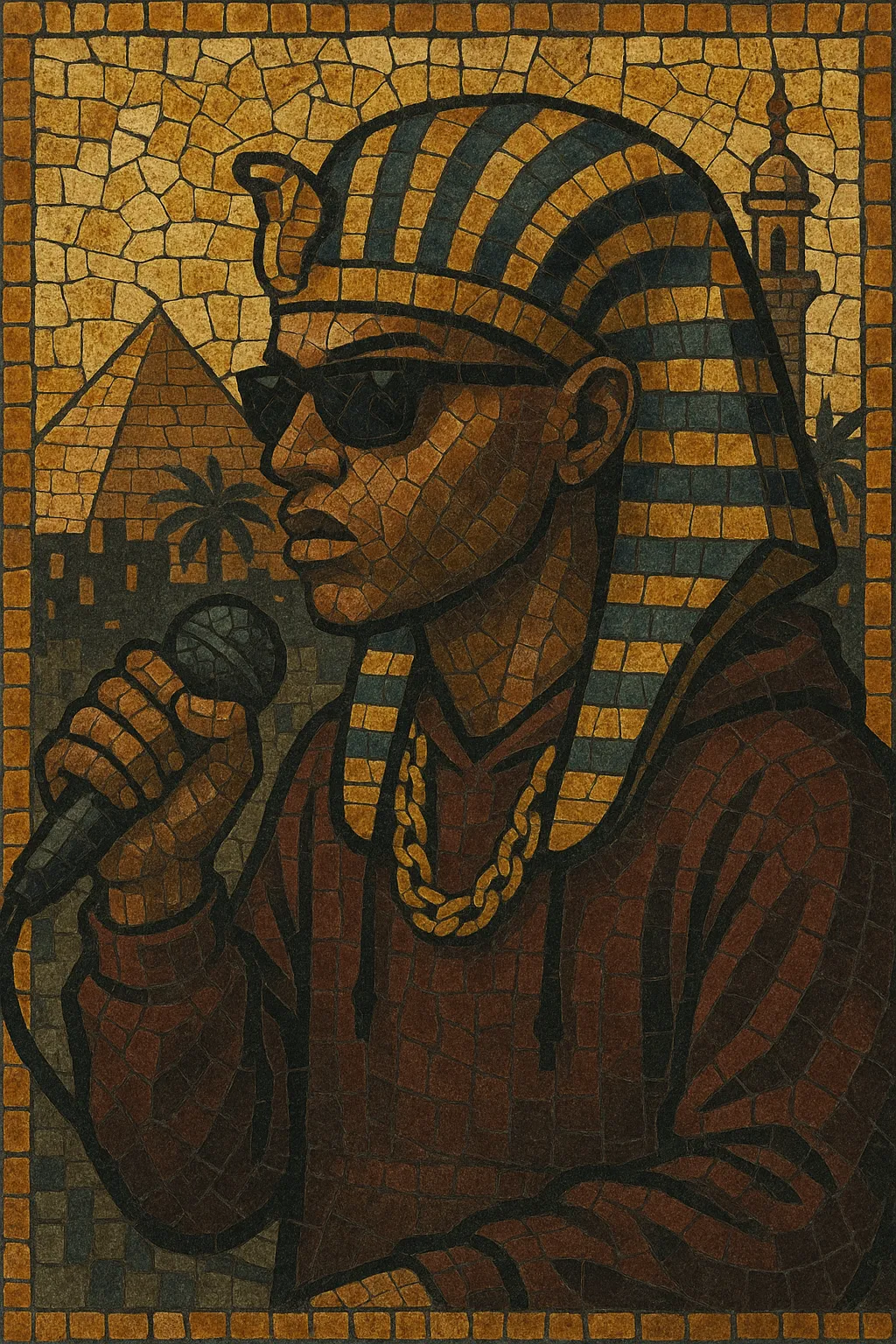Egyptian hip hop is the rap music of Egypt, performed primarily in Egyptian Arabic (Masri) and built on contemporary hip hop production with local rhythmic and melodic signatures. It blends 808-heavy trap and drill beats with timbres and grooves drawn from shaabi street music and the post-2010s mahraganat movement.
Lyrically, the style is direct and colloquial, covering social commentary, street life, humor, and personal reflection. Sonically, it often features skittering hi-hats, sliding 808s, and dark, moody textures, while hooks may incorporate maqam-influenced melodies, mizmar- or darbuka-like samples, and chantable refrains suited to massive singalongs.
Egyptian hip hop grew from Egypt’s long tradition of street music and poetry (shaabi) and the early-2000s import of US rap aesthetics. Pop-rap acts like MTM introduced a playful Egyptian-Arabic flow to mainstream audiences, while underground crews began experimenting with home recording and online distribution. Early pioneers built a localized lexicon—slang, cadences, and humor specific to Cairo and Alexandria—on top of classic boom-bap and early trap templates.
The 2011 revolution catalyzed an explosion of politically charged tracks and DIY releases shared through YouTube, SoundCloud, and Facebook. Groups like Arabian Knightz gained international attention (e.g., releasing the protest track “Rebel,” sampling Lauryn Hill, during the internet blackout). This period normalized Egyptian colloquial rap as a vehicle for social commentary and broadened the audience for underground emcees such as MC Amin and Shahyn.
By the mid-to-late 2010s, a new wave fused trap/drill sonics with local percussion and mahraganat textures. Producers (notably Molotof) pushed gritty, bass-heavy sound design that matched the stark lyricism of artists like Abyusif. Alexandria became a hotspot, with Marwan Pablo and Afroto helping define a distinctly Egyptian trap sound—minimal, cold, and 808-driven, yet rooted in regional rhythm and melody.
In the 2020s, artists such as Wegz, Marwan Moussa, Abo El Anwar, and Lege-Cy turned Egyptian rap into a national pop force, racking up streaming milestones on Anghami, Spotify, and YouTube. Despite periodic debates with cultural authorities and gatekeepers, the scene professionalized, diversified (from introspective cloud-trap to hard drill), and crossed over into film/TV syncs and major festivals. The genre now sits at the center of Egyptian youth culture, shaping slang, fashion, and mainstream pop production.


